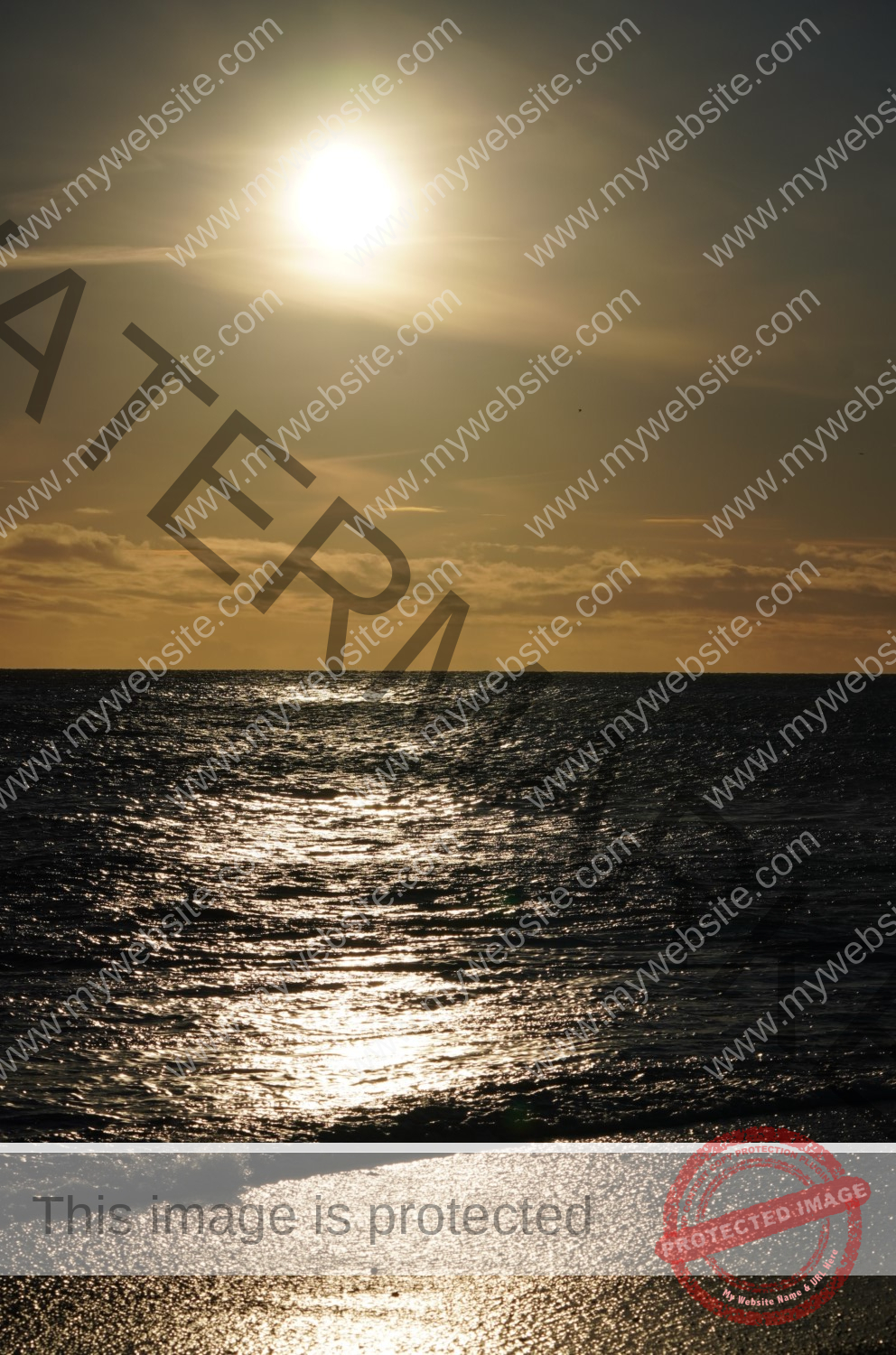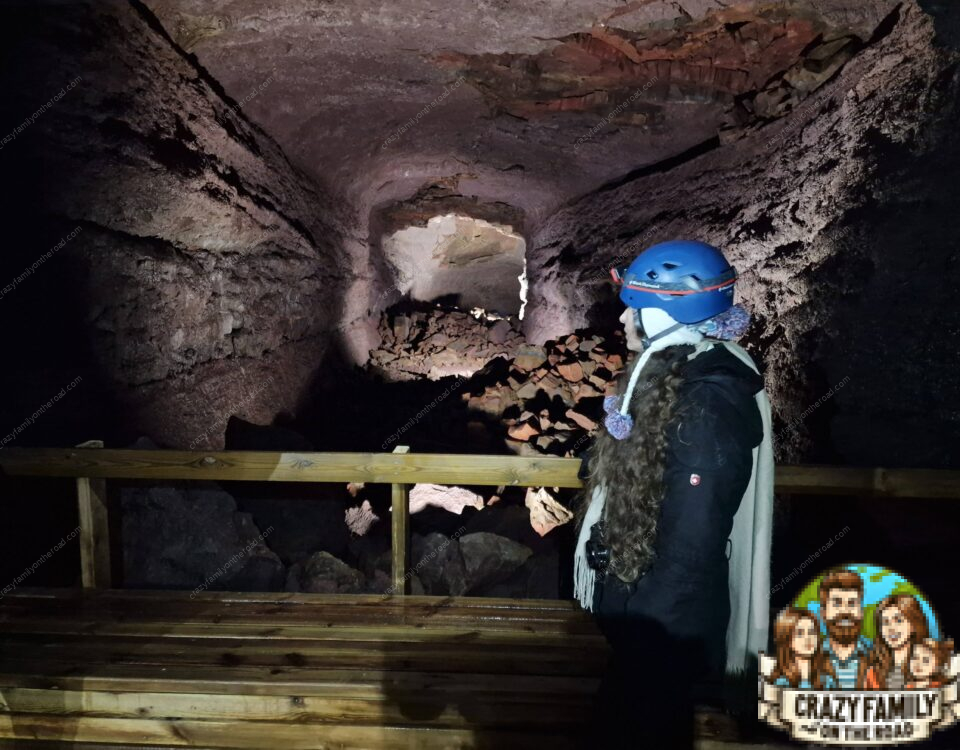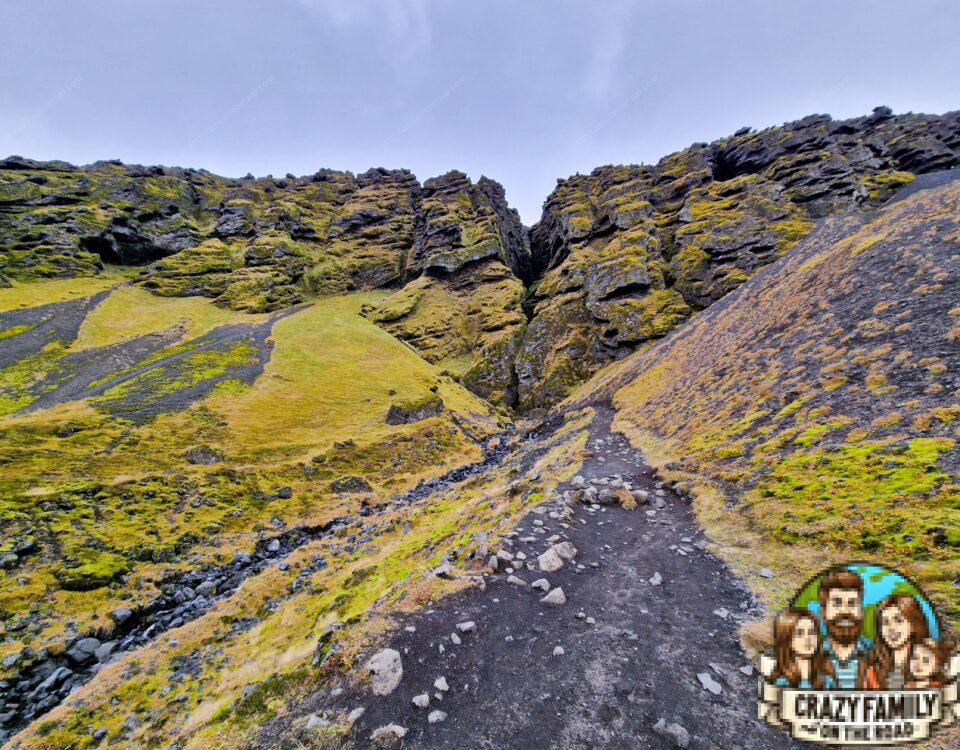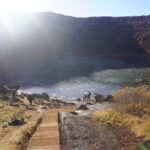
Kerid Crater
28. October 2024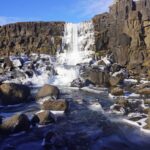
Golden Circle
29. October 2024Reynisfjara Beach: treacherous waves
Reynisfjara Beach is one of the most famous and impressive places on the south coast of Iceland. Not only is this beach famous for its black sand and basalt columns, but especially for the waves that regularly overwhelm the tourists. Nature still holds the scepter here, so you have to be careful.
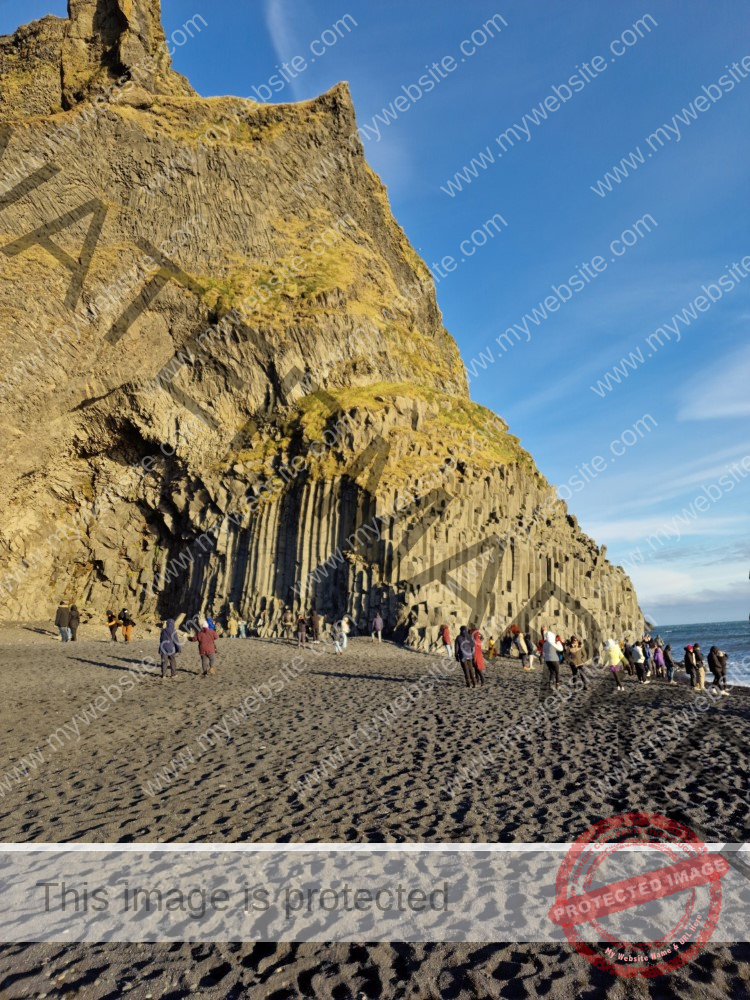
Where can you find Reynisfjara Beach?
Approximately 180 kilometres from Reykjavík, the beach is just a few minutes’ drive from Vík, making it relatively easy to reach. From Skógafoss waterfall, you’re here in about half an hour. On the way, be sure to stop for the famous Black Crust Pizza in Vík – it’s fabulous! And they’ll especially make other variations if you’re allergic.

Tourists from all over the world love the beach. They come here to admire the black sand, the iconic basalt columns that look like natural organ pipes, and fascinating rock formations such as Reynisdrangar, which legend has it were created by trolls trying to pull a boat ashore. Iceland is full of stories about trolls .
Impressive scenery and dangerous waves
Reynisfjara Beach offers scenery that you won’t find on other beaches in Iceland. The black volcanic sand contrasts with the white sea waves breaking wildly against the shore. Known as ‘sneaker waves’, this phenomenon is a wave that creeps in silently but can reach unexpected heights and pull people into the sea.
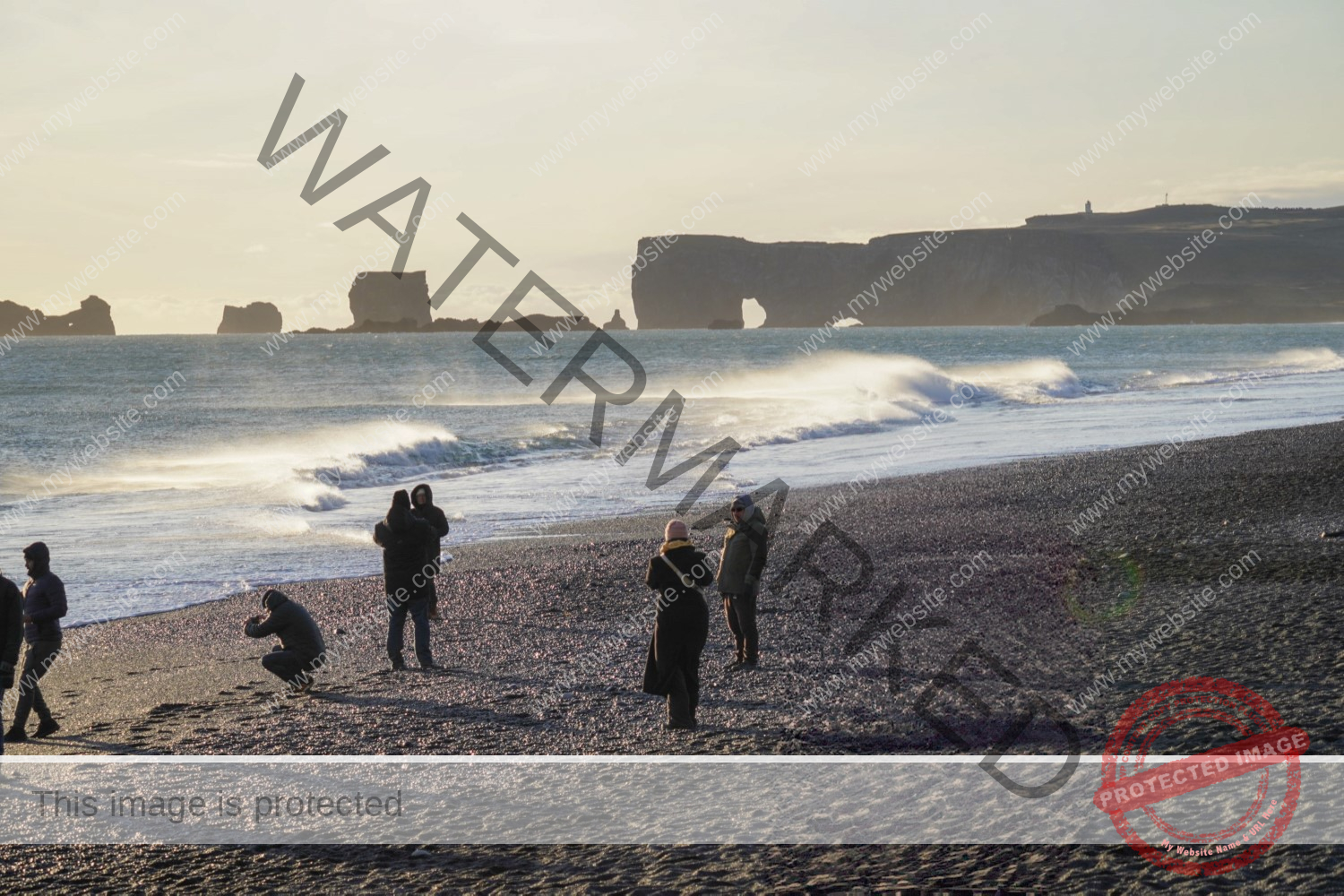
Therefore, the local authorities have placed warning flags and signs on the beach, which constantly warn of these unpredictable waves. Yellow and red flags clearly indicate where it is safe to move and where you should stay as far away as possible. Still, they often take tourists by surprise who are focused on taking pictures.
During our visit there were only yellow flags everywhere, and no unpredictable wave came. Thanks to that, we fully enjoyed the beauty of the beach and the typical Icelandic wind that blows here almost all year round.
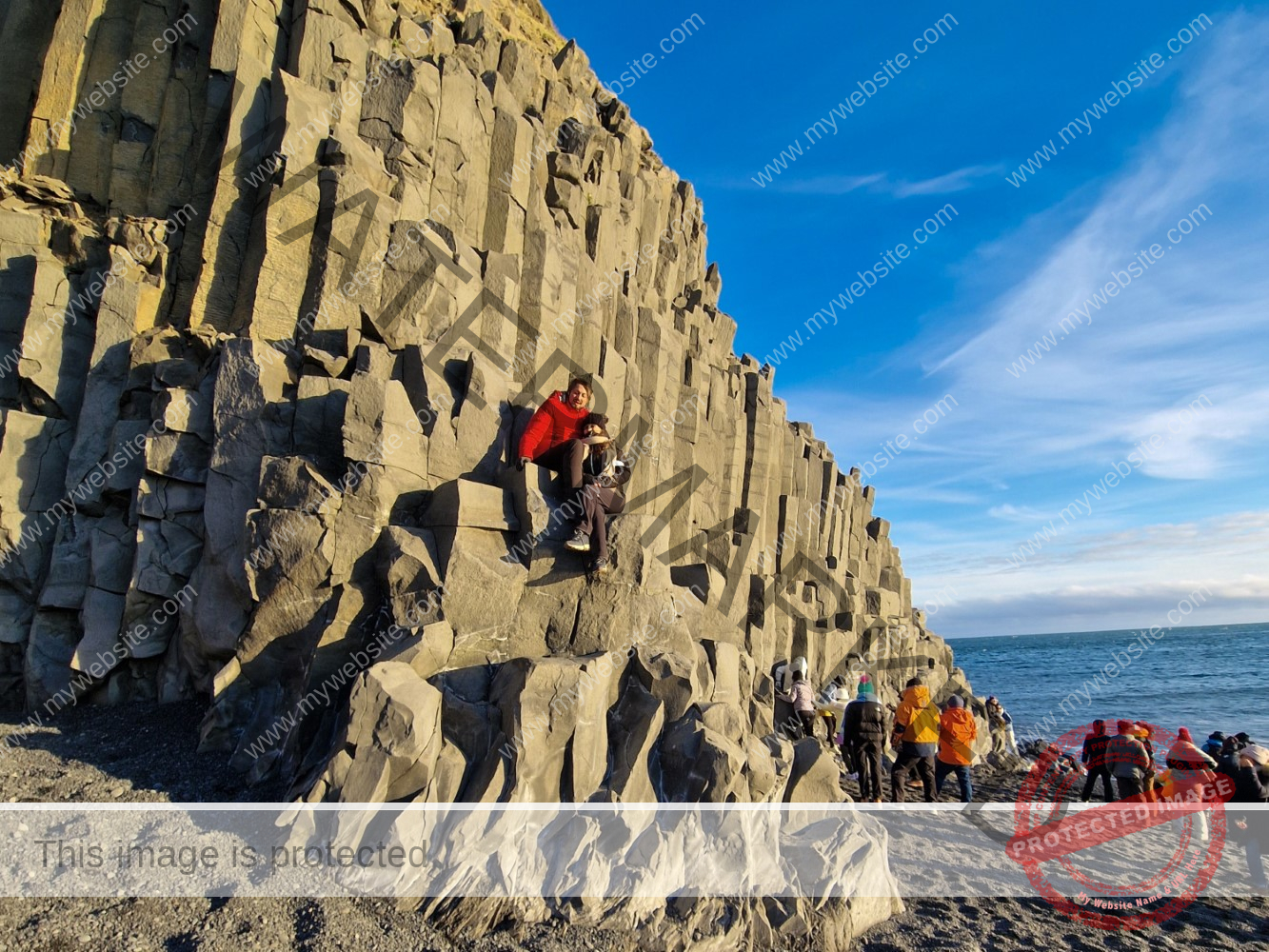
Basalt columns at Reynisfjara
One of the most iconic features of Reynisfjara are the dramatic basalt columns that rise above the beach and form massive rock walls. These columns, also known as Gardar, were formed by the solidification of lava that cooled slowly to form hexagonal shapes. Although these natural formations can be seen in many places in Iceland, it is at Reynisfjara that they are particularly impressive, rising directly from the black sand.
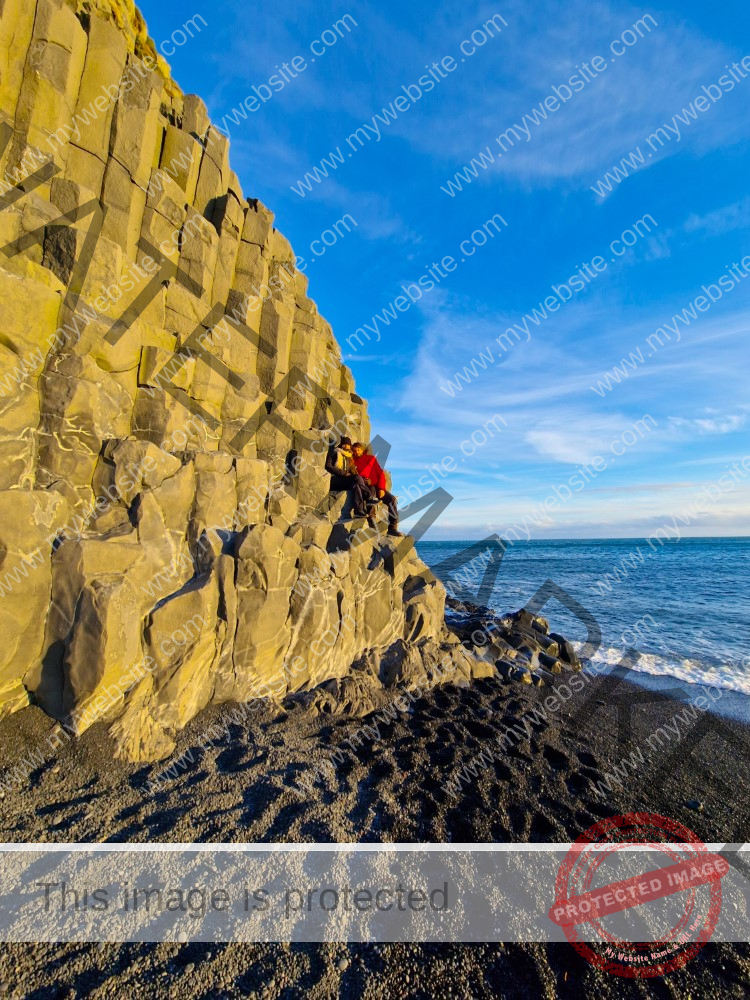
If the sea permits, you can climb these rocks and enjoy the natural beauty up close. At the same time, you’ll get a better view of the opposite end of the beach. But count on a line of people waiting for their photo.
Behind the basalt columns you will find “troll” rocks and a cave. However, because of the dangerous waves, the way further is quite a big gamble. We decided not to tempt fate and stay safe from the waves.
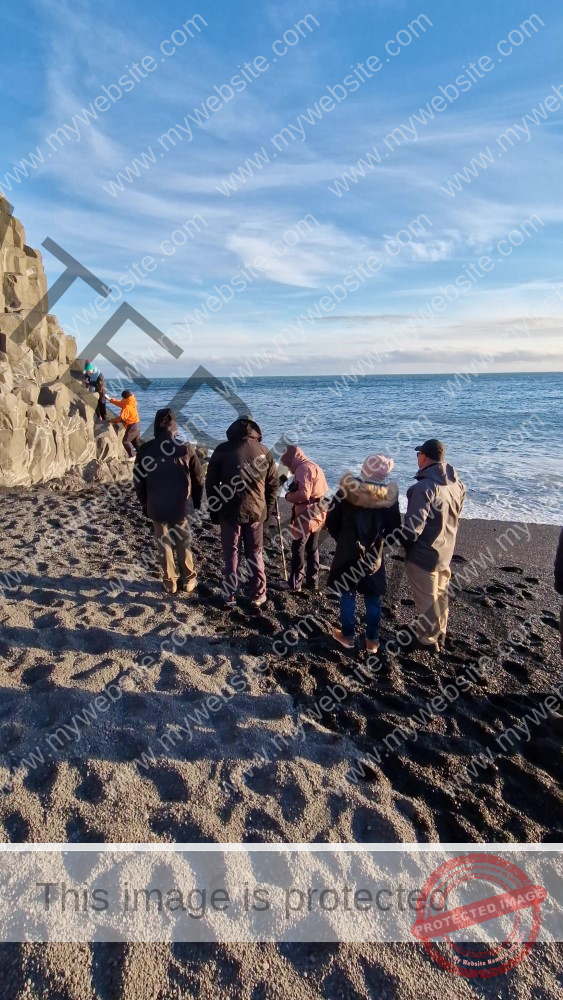
At sunset
Reynisfjara Beach was our penultimate stop in the southwestern part of Iceland. This gave us a chance to watch the slowly setting sun illuminate the rocks to golden colours and reflect off the sea surface. Walking along the beach takes about an hour, but expect to linger here much longer, admiring every detail. It all depends on the strength of the wind you feel here.
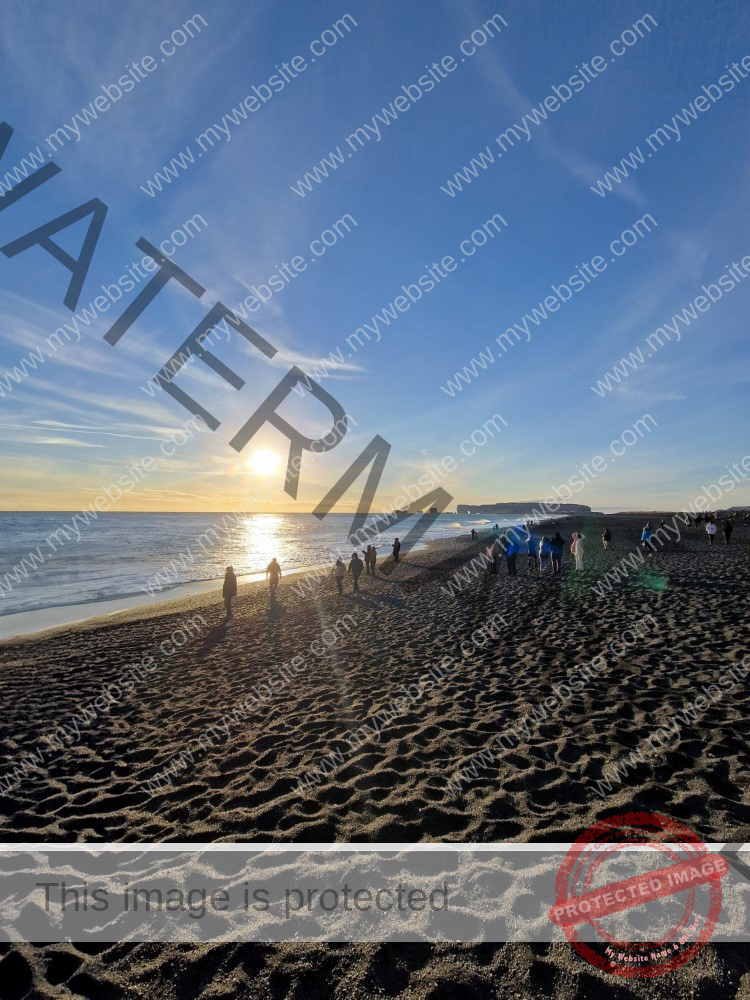
The Legend of the Trolls of Reynisdrangar
Part of the unique panorama of Reynisfjara are three rock formations protruding from the sea – known as Reynisdrangar. According to an old Icelandic legend, these rocks are actually transformed trolls. According to the story, three trolls attempted to drag a large ship to the shore. They worked diligently through the night, but were so focused on their task that they did not notice the approaching dawn.
As the first rays of sunlight hit the sky, the trolls became petrified and stayed in the sea forever. Icelanders still tell this story today, which adds to the mystical and wild atmosphere of the beach. Looking at Reynisdrangar on a cloudy or foggy day, it is not hard to see why this legend has been preserved.
